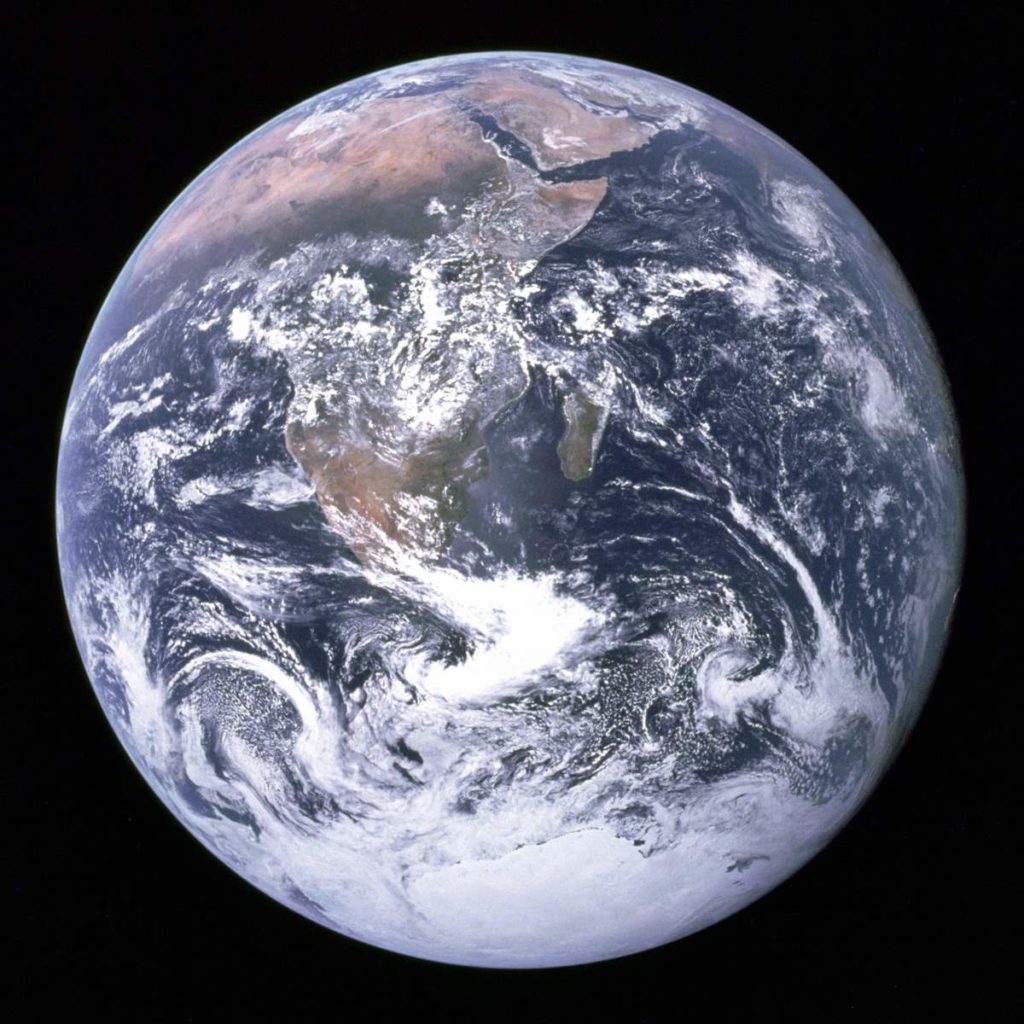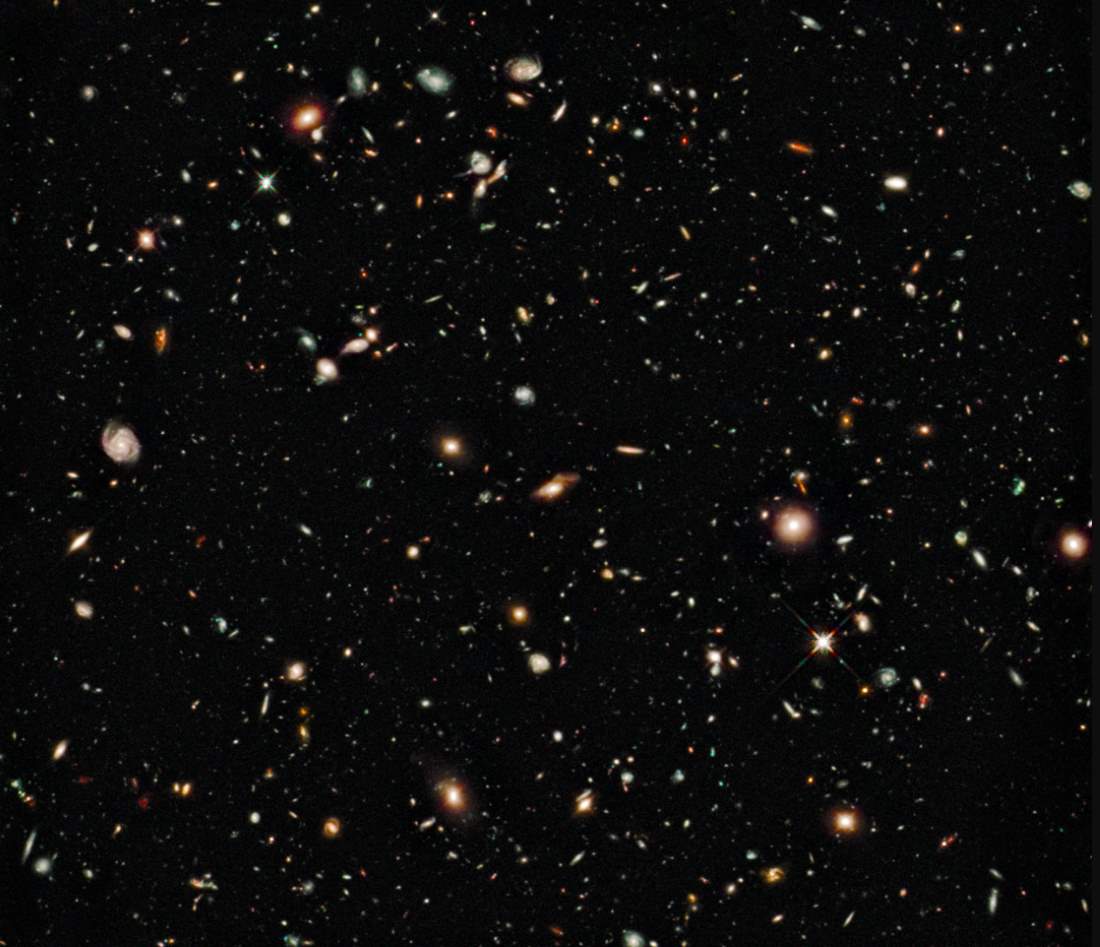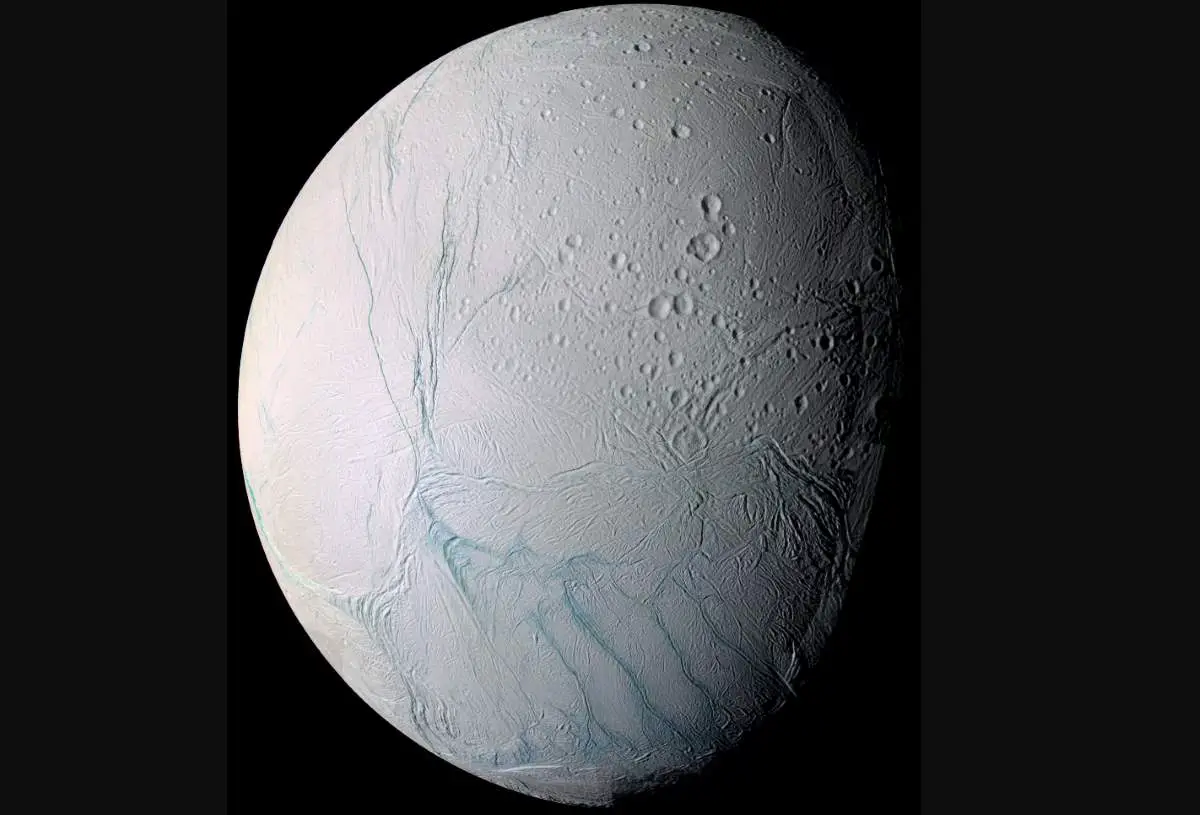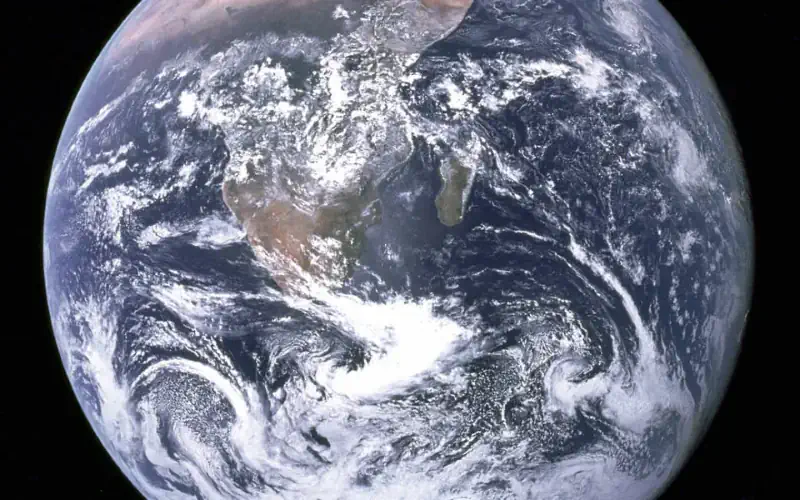Are we alone in the universe? Or are there any other “living planets” other than Earth? How to tell if a planet harbors life? Until 1992, we even don’t know if there are any other planets around the other stars or not. In 1992, two Swiss astrophysicists, Michel Mayor and Didier Queloz the first “exoplanet” (a planet orbiting another star than the Sun).
Then, discoveries continued. Especially after the launch of the Kepler space telescope on March 7, 2009, which is a space observatory launched by NASA to discover Earth-size planets orbiting other stars, we quickly learned that our Solar System is not a rare phenomenon at all. As of November 2017, scientists have confirmed more than 3,500 exoplanets in more than 2,700 star systems. Now, the question is: are any of these planets (or the planets waiting to be discovered in the future) harbor life? If so, how we can find out?
Currently, we have only one example: the Earth itself. Studying Earth and trying to figure out how we’d conclude the Earth harbors life from a distance (from space) can show us how to find out if a planet harbors life or not. Since 1997, NASA satellites have continuously observed all plant life at the surface of the land and ocean.

Finding a living planet: how to tell if a planet harbors life?
In the video below, titled “How to Find a Living Planet” and published by the NASA Goddard channel, NASA scientists explain the main characteristics of a planet that harbors life, and how studying our own planet might help to find one.
First, some numbers:
- In October 2016, an international team of astronomers, led by Christopher Conselice, Professor of Astrophysics at the University of Nottingham, have found that the universe contains at least 2 trillion galaxies, ten times more than previously thought. Some researchers, for example, David Kornreich, an assistant professor at Ithaca College in New York State, thinks the number is much higher. He estimates that there are at least 10 trillion galaxies in the universe. Let’s take the smaller number, 2 trillion.

- There are around 100 billion stars in each Galaxy. Multiplying these two, we can estimate that there are at least 2×1023 stars in the universe. How many of these stars are Sun-like? In fact, some other types of stars, for example, red dwarfs, also can have planets in the habitable zone, but to keep things simple, let’s consider only Sun-like stars. Around 5%-20% of all stars are Sun-like. Again, let’s take the minimum.
- Quite a big number, right? “2” with 21 zeros after it. 2,000,000,000,000,000,000,000 or two sextillion. And this number is not exaggerated, some other guesses give larger numbers like 6 sextillions. Either way, there may be more Earth-like planets than grains of sand on all the beaches on Earth.
Of course, this is just a guess and we don’t have that many examples in hand. But we definitely have some candidates like Kepler-452b.
Let’s go back to the question. How to tell if a planet harbors life? NASA scientists say that “in short, the first thing we’re going to do is figure out how we’d find ourselves”.
Dr. Shawn Domagal-Goldman, a research space scientist and astrobiologist at NASA Goddard Space Flight Center says: “We can now apply the scientific method to the question of are we alone? Based on our understanding of how life operates on Earth, we are starting to derive principles of the signals that life creates that we could then look for on these planets around other stars.”
By studying Earth’s climate over its long history, we have a pretty good understanding of how the climate operates on other rocky planets. That gives us some clues on the distance from its star and the size of the planet that could harbor a global biosphere like the one we have here on Earth.
Domagal-Goldman says: “We have a concept for this. It’s called the habitable zone or Goldilocks zone (see notes 1). The basic idea is, you can’t be too hot, because otherwise, you’ll lose all oceans. They’ll basically boil and steam away. You can’t be too cold, because then your oceans will freeze over. You want that big sort of ocean reservoir at the surface which happens when you’re kind of in the middle and just right.”
The size of the planet matters too. For example, our moon, like Earth, is in the middle of the Goldilocks zone, but it’s too small to hold on to an atmosphere. Contrary, if the planet is too big, there will be too much pressure bearing down on liquid water. If the planet is a gas giant, like Jupiter, there will be no surface at all.

Domagal-Goldman says: “We’re on a Goldilocks planet. We found a lot of other so-called Goldilocks planets in the last few years that we could then think about looking for signs of life on in the future.”
Another thing is, it seems life can endure some extreme conditions. Tiffany Kataria, an Exoplanet Research Scientist at the NASA Jet Propulsion Laboratory, says: “The most amazing thing that Earth has taught us is that life can really exist in really dramatic environments, from really hot environments in the middle of a desert to really cold environments with little light at the very bottom of the ocean.”
Here on Earth, where even just tiny speck of liquid water exists, there’s life. Because of that, the existence of liquid water is the focal point of NASA’s search for habitable environments (or extraterrestrial life). That’s why scientists get excited about the water spewing up from the icy moons of
The combination of atmospheric gases is also important. Find oxygen and methane in the same atmosphere, and you’ve got something special. Domagal-Goldman says: “There are ways to build up oxygen or methane in a planetary atmosphere, but the only way you get them both in the same atmosphere at the same time is if you produce them both super rapidly. And the only way we know how to do that is through life.”
The next thing scientists could look for is the colors of life, like the chlorophyll found in plants on land and algae and phytoplankton in the ocean. In the future, we could be able to detect similar colors on a planet orbiting another star.

As a summary, based on what we know about Earth, we can tell if a planet likely harbors life or not. The main signatures to look for include:
- The planet must be rocky.
- The planet must be in the Goldilocks zone (also known as the habitable zone) to harbor liquid water.
- The planet must be big enough to keep a thick atmosphere. But it must be not too big, either.
- The existence of right atmospheric gases.
- The existence of the colors of life. Seasonally changing patches of color and reflectivity also help.
- Not mentioned in the video, but many scientists think a large moon, like ours, also helps, because of the tidal effect (it stirs the oceans).
Notes
- The Goldilocks principle is named by analogy to the children’s story, The Three Bears, in which a little girl named Goldilocks tastes three different bowls of porridge, and she finds that she prefers porridge which is neither too hot nor too cold but has just the right temperature. The Goldilocks principle states that something must fall within certain margins, as opposed to reaching extremes. In planetary science, the “Goldilocks zone” is the terminology for the band around a sun where temperatures are neither too hot nor too cold for liquid water to exist. The size of the habitable zone clearly depends on the luminosity of the star, which determines the equilibrium temperature of the planet. However, modern models for the range of the habitable zone take into account more subtle effects, such as the effect of the carbonate-silicate cycle in regulating carbon dioxide in a planet’s atmosphere. Estimates for the habitable zone within the Solar System range from 0.38 to 10.0 astronomical units or AU (the distance between Earth and Sun, approximately 93 million miles or 150 million km). The average distances from the Sun of some major bodies within the various estimates of the habitable zone are: Mercury, 0.39 AU; Venus, 0.72 AU; Earth, 1.00 AU; Mars, 1.52 AU; Vesta, 2.36 AU; Ceres, 2.77 AU.
- Europa is the smallest of the four Galilean moons orbiting Jupiter, and the sixth-closest to the planet. The Galilean moons are the four largest moons of Jupiter-Io, Europa, Ganymede, and Callisto. They were first seen by Galileo Galilei in January 1610 and recognized by him as satellites of Jupiter in March 1610. Europa is also the sixth-largest moon in the Solar System. Europa was discovered in 1610 by Galileo Galilei and was named after Europa, the legendary mother of King Minos of Crete and lover of Zeus (the Greek equivalent of the Roman god Jupiter). Europa has a smooth and bright surface, with a layer of water surrounding the mantle of the planet, thought to be 100 kilometers thick. The smooth surface includes a layer of ice, while the bottom of the ice is theorized to be liquid water. The apparent youth and smoothness of the surface have led to the hypothesis that a water ocean exists beneath it, which could conceivably serve as an abode for extraterrestrial life. Heat energy from tidal flexing ensures that the ocean remains liquid and drives geological activity. Life may exist in Europa’s under-ice ocean, perhaps subsisting in an environment similar to Earth’s deep-ocean hydrothermal vents or Antarctica’s Lake Vostok. Life in such an ocean could possibly be similar to microbial life on Earth in the deep ocean. So far, there is no evidence that life exists on Europa, but the likely presence of liquid water has spurred calls to send a probe there.
- Enceladus is the sixth-largest moon of Saturn. It is about 500 kilometers (310 mi) in diameter, about a tenth of that of Saturn’s largest moon, Titan. Enceladus is mostly covered by fresh, clean ice, making it one of the most reflective bodies of the Solar System. Enceladus ejects plumes of saltwater that are laced with grains of silica-rich sand, nitrogen (in ammonia), and organic molecules, including trace amounts of simple hydrocarbons. This indicates that hydrothermal activity may be at work in Enceladus’s subsurface ocean. The presence of an internal global salty ocean with an aquatic environment supported by global ocean circulation patterns, with an energy source and simple organic compounds in contact with Enceladus’s rocky core, may advance the study of astrobiology and the study of potentially habitable environments for microbial extraterrestrial life. Therefore, several robotic missions have been proposed to further explore Enceladus and assess its habitability; some of the proposed missions are Journey to Enceladus and Titan (JET), Enceladus Explorer (En-Ex), Enceladus Life Finder (ELF), Life Investigation For Enceladus (LIFE), and Enceladus Life Signatures and Habitability (ELSAH).
Sources
- “Our Living Planet Shapes the Search for Life Beyond Earth” on NASA.gov
- “How To Tell If A Planet Harbors Life” on blog.4psa.com
- 51 Pegasi b on Wikipedia
- Goldilocks principle on Wikipedia
- The Goldilocks Principle on judithcurry.com
- “A universe of 2 trillion galaxies” on phys.org
- “How Many Stars Are In The Universe?” on Space.com
- “The Habitable Zone” on e-education.psu.edu
- Circumstellar habitable zone on Wikipedia
- Europa (moon) on Wikipedia
- Enceladus on solarsystem.nasa.gov
- Moon Landings: All-Time List [1966-2025] - February 2, 2025
- What Is Max-Q and Why Is It Important During Rocket Launches? - January 16, 2025
- Top 10 Tallest Rockets Ever Launched [2025 Update] - January 16, 2025

